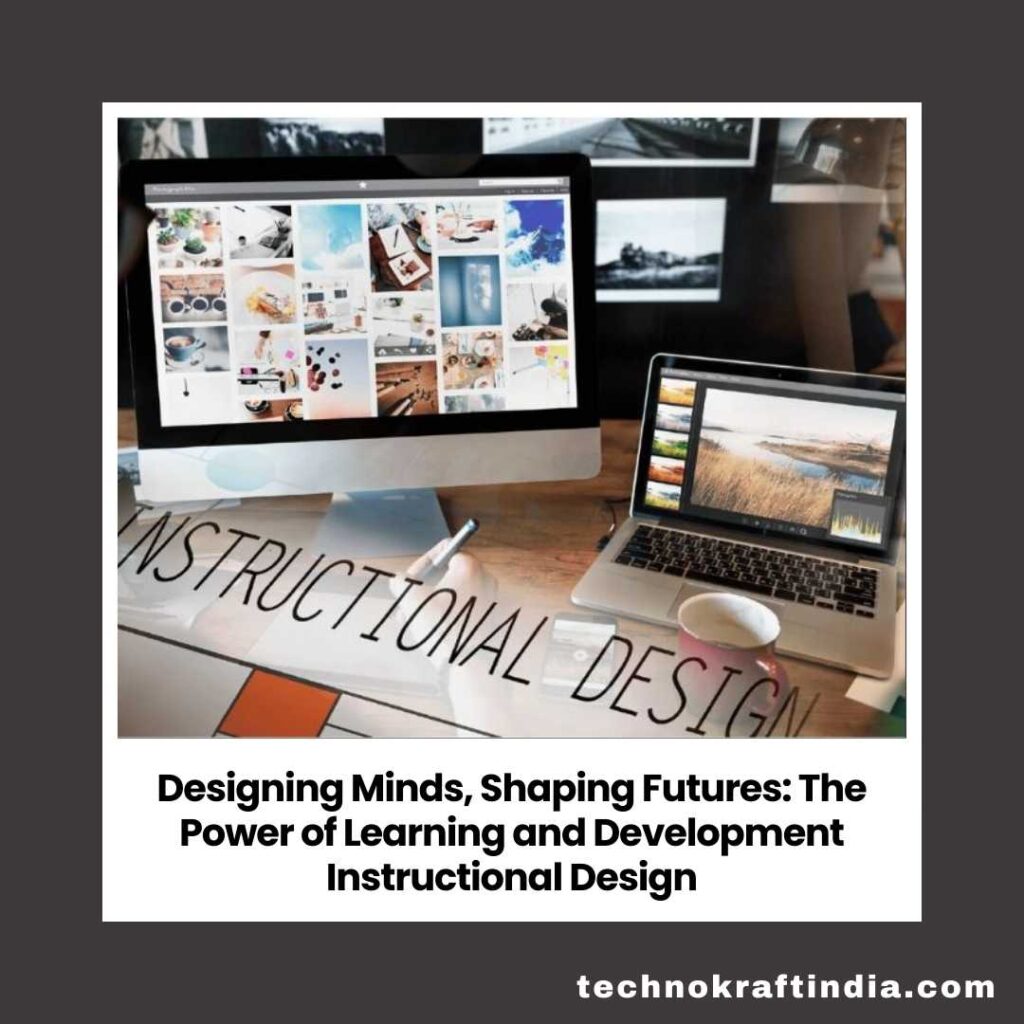
Designing Minds, Shaping Futures: The Power of Learning and Development Instructional Design
Designing Minds, Shaping Futures: The Power of Learning and Development Instructional Design
Organizations grow when their people grow. That simple truth drives the rising importance of Learning and Development Design. Modern workplaces demand fast learning, sharper skills, and continuous adaptability. Employees expect meaningful training that respects their time and adds real value to their careers. Instructional design plays a central role here because it blends creativity, psychology, technology, and strategy into structured learning experiences.
This blog explores how instructional design transforms workplace development into a powerful engine for performance, engagement, and long-term success.

1. Understanding the Core of Learning and Development Instructional Design
Instructional design begins with a clear purpose: to create learning that is easy to understand, relevant, and practical. The process uses research-based models such as ADDIE, SAM, and Bloom’s Taxonomy. These models guide every stage of the learning journey. They also help instructional designers create content that fits different learning needs.
In today’s competitive world, Learning and Development Design is not only about teaching skills. It focuses on improving problem-solving, communication, and decision-making abilities. Organizations expect training programs to deliver measurable results. This expectation pushes designers to create impactful learning solutions that engage learners at every step.
Another key element is learner psychology. Designers study how adults learn best. They use insights about attention, motivation, and memory retention. As a result, training programs feel personal, practical, and easy to follow. This understanding shapes everything from content structure to assessments.
Technology also plays a huge role. Learning management systems, microlearning apps, simulations, and AI-powered tools help deliver content in new ways. These tools make learning flexible and scalable. When technology blends with strategy, the training experience becomes more effective and enjoyable for employees.
2. The Strategic Role of Instructional Designers in Modern Organizations
Instructional designers act as architects of corporate learning. Their work goes far beyond creating slides or writing manuals. They analyze business goals and translate them into learning outcomes. This alignment ensures that training supports the organization’s vision. It also ensures that employees gain the right skills at the right time.
A skilled designer understands how to shape information. They break down complex topics into simple, engaging formats. This clarity helps learners absorb knowledge faster. It also reduces confusion and training fatigue. Designers also use storytelling, visuals, and interactive activities. These techniques increase engagement and make learning memorable.
In many companies, learning serves as a strategic advantage. Competitive industries rely on fast skill development. Instructional designers step in to design targeted learning paths that build future-ready teams. These paths help employees grow while ensuring that business needs are met.
Communication is another essential skill in this role. Designers collaborate with subject matter experts, managers, and training teams. This teamwork ensures accurate and updated content. Good communication also speeds up development and improves the quality of training programs.
3. Building Effective Learning Experiences Through Design Models
Design models guide instructional designers in creating structured learning experiences. The ADDIE model is the most widely used. It includes Analysis, Design, Development, Implementation, and Evaluation. Each stage improves the quality of the final training product. By following this process, designers ensure that content is relevant and useful.
During the analysis phase, designers study the learners, goals, and challenges. This step shapes the entire training plan. The design phase includes planning content, objectives, and assessments. In the development stage, the actual learning materials come to life. Implementation brings the training to the learners. Evaluation measures the program’s success.
Another model gaining popularity is SAM (Successive Approximation Model). It supports quick design cycles. It is great for industries that need fast updates. SAM encourages constant feedback. This makes learning products accurate and aligned with user needs.
Bloom’s Taxonomy is also valuable. It helps designers create strong learning objectives. These objectives guide the depth of knowledge required. Learning experiences become more structured and measurable.
When all these models work together, learning and development instructional design becomes a powerful process. It creates learners who can think critically, solve problems, and apply new knowledge confidently.
4. Using Technology and Innovation to Enhance Learning Outcomes
Digital learning is reshaping workplaces worldwide. Technology expands what instructional designers can do. They can create interactive eLearning modules, realistic simulations, bite-sized microlearning, and gamified lessons. These tools help learners stay motivated. They also make training convenient for busy schedules.
Learning management systems (LMS) track progress and deliver personalized content. Employees can learn at their own pace. Managers can measure performance with real-time data. This combination improves training efficiency.
AI and automation also support instructional design. AI tools recommend learning paths, analyze learner behavior, and offer personalized suggestions. Automation speeds up manual work like assessments or progress tracking. These advancements help companies scale their learning programs without losing quality.
Virtual reality (VR) and augmented reality (AR) bring hands-on learning to life. They create safe environments for practice. Industries like healthcare, manufacturing, and aviation benefit greatly. These immersive experiences increase memory retention and boost confidence.
Innovation transforms learning and development instructional design into a dynamic field. Designers constantly explore new tools that make learning enjoyable and effective.
5. Measuring Success and Continuously Improving Learning Programs
Training programs must show results. That is why evaluation is a critical part of instructional design. Organizations want to know if learning leads to better performance, fewer errors, and stronger productivity. Designers use models like Kirkpatrick’s Four Levels to measure training impact.
The four levels include reaction, learning, behavior, and results. At each stage, feedback helps refine the program. Learners share their experience. Tests measure knowledge. Managers track behavior changes. Business outcomes show the final impact.
Continuous improvement keeps learning relevant. Designers update content based on performance data. They add new examples, revise assessments, or enhance activities. This approach ensures that training evolves with changing needs.
Real-world application is the ultimate test. When employees use their new skills effectively, the training succeeds. This practical impact is the true strength of learning and development instructional design. It creates value for learners and organizations alike.
Conclusion
Learning and Development Design shapes the future of workplace growth. It blends strategy, psychology, creativity, and technology into meaningful learning experiences. As organizations face new challenges, training must adapt. Employees need programs that are engaging, relevant, and effective. Instructional design fulfills this demand by building structured, impactful learning journeys.
With strong design models, innovative tools, and continuous improvement, instructional designers empower both people and businesses to reach their full potential. In a world where skills define success, instructional design stands at the center of transformation.
